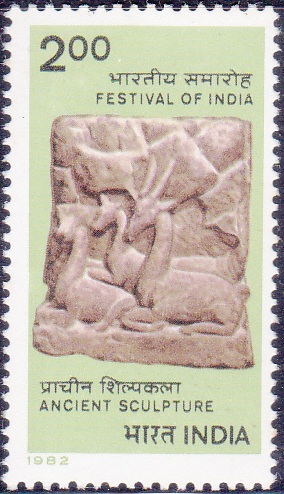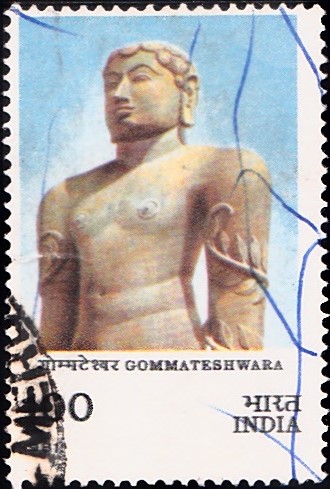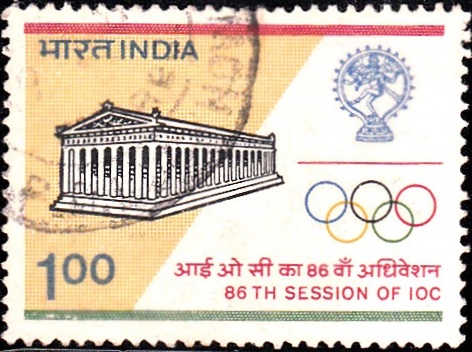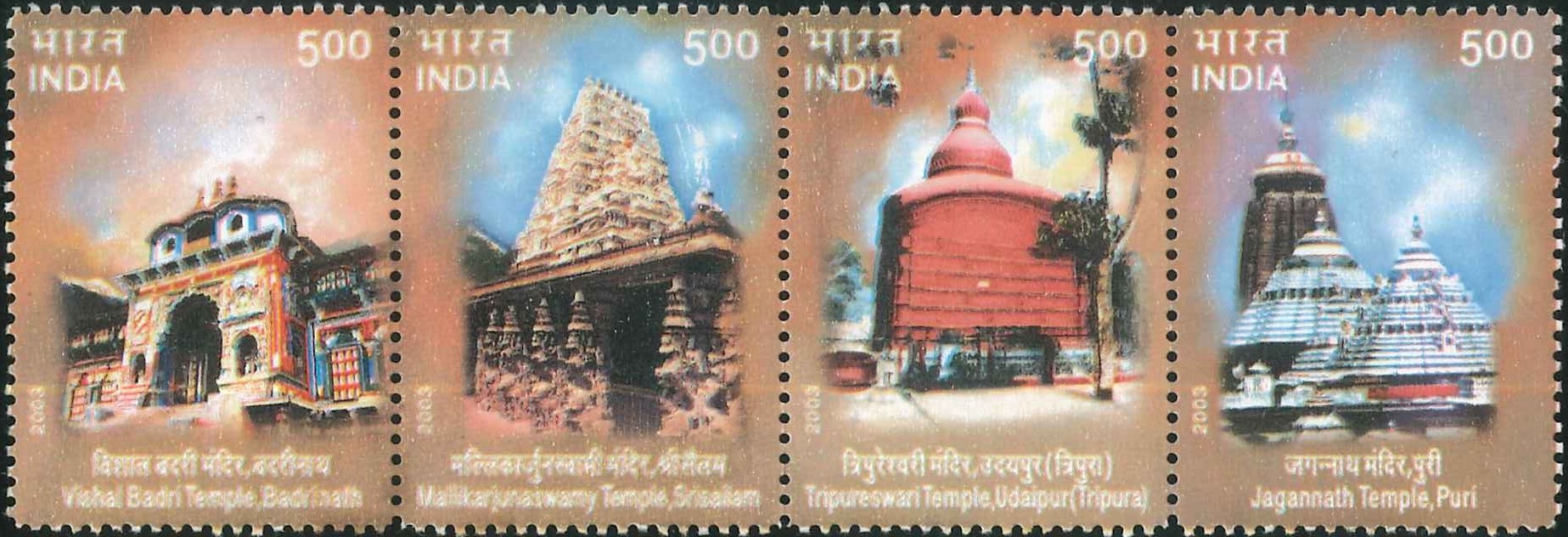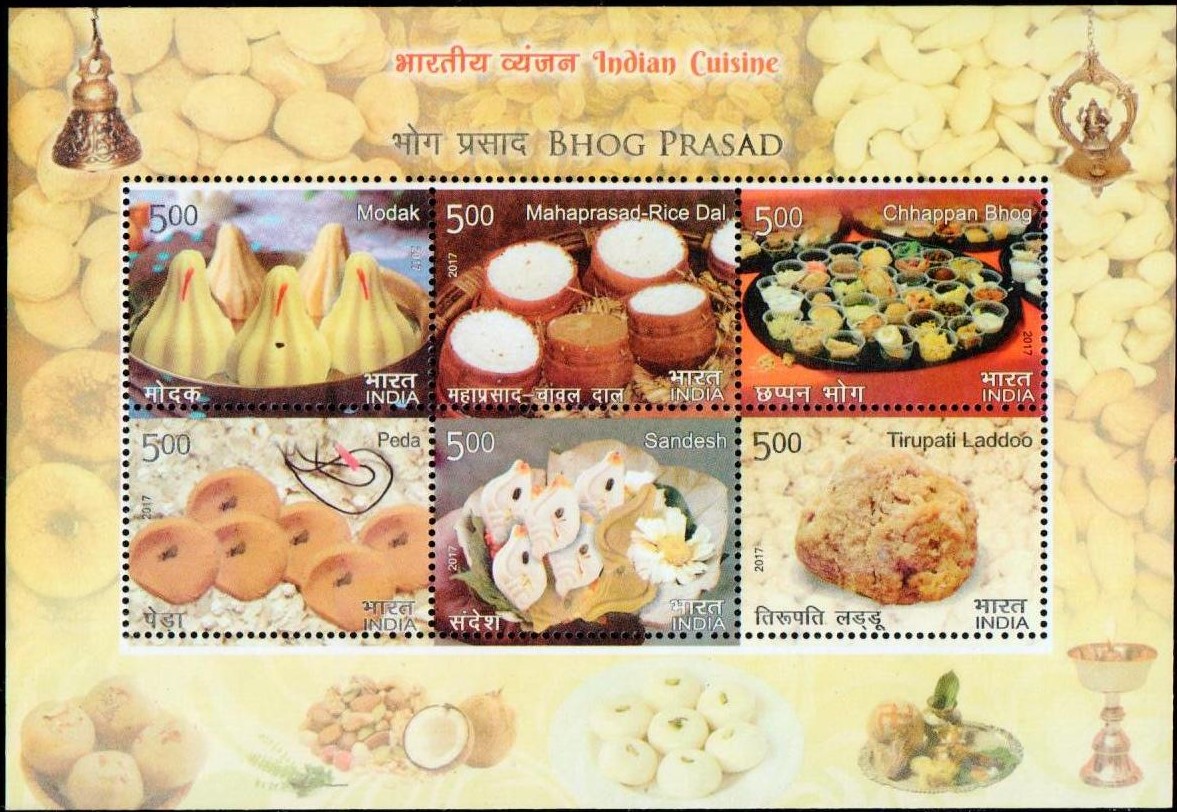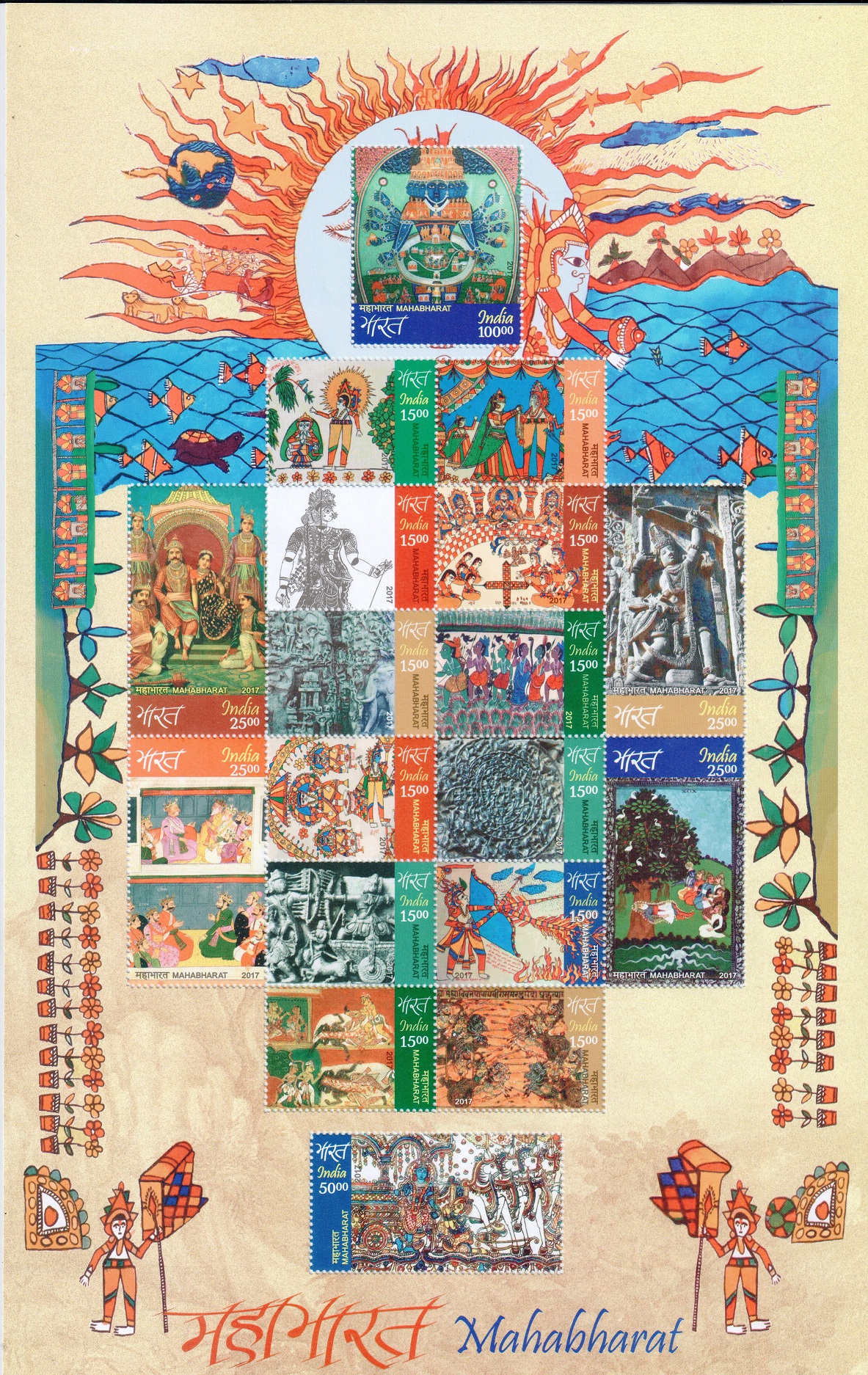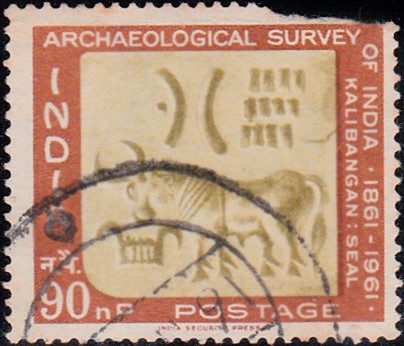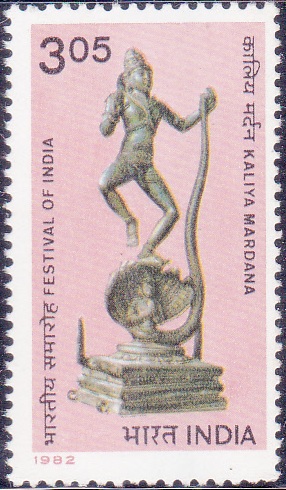
India on Ancient Sculpture 1982
Complete Set of 2 nos of commemorative postage stamps on the Festival of India, London : Ancient Indian Sculptures :
Issued by India
Issued on Mar 23, 1982
Issued for : Indian Posts and Telegraphs Department is privileged to issue a set of two special stamps on Ancient Indian Sculpture.
Type : Stamps, Mint Condition
Colour : Multicolour
Denomination : 2 & 3.05 Rupee
About :
- Kalia-Mardana :
- The large size image, cast in bronze shows Krishna dancing on the serpent hoods of Kaliyanaga. Krishna‘s right hand is in “abhayamudra” (imparting protection), while with the left he is holding the tail of the snake. The elegantly carved image wears the usual ornaments – necklace, armlets, girdle, anklets, etc., and short drawers. Nagaraja is shown under five hoods with hands held in “anjalimudra” (pose of salutation). The rectangular pedestal of the image has four hooks on four corners meant to fasten it tightly with the wooden pedestal kept on temple chariots to carry it out in religious processions.
- A Kaliya–Krishna of the period of transition from Pallava to Chola and nearer the earliest phase of Chola idiom, this belongs to 9 Century A.D. The delicate treatment of the dancing figure balanced on the hoods of the snake and the charm of the Nagaraja represented against the snakehoods are noteworthy.
- Kaliya-Mardana – The Legend
- In the river Kalindi, there was another lake which was the abode of the serpent Kaliya. Kaliya polluted the water of the river by its venom. In order to subdue the serpent, so as the pollution is stopped, Krishna jumped down from a Kadamba tree into the river and began to play in the water, striking it with his arms. The noise created by Krishna, obviously, enraged Kaliya and the later encircled Krishna with his coils. To the joy of all Krishna set himself free from the coils of the serpent. Now came the opportunity when the arrogance of Kaliya could be crushed. He placed one of his feet on his hoods. Kaliya suffered extreme pain on account of the weight of Krishna‘s body. Because of the constant fight with Krishna, the serpent king Kaliya became tired and powerless. The moment he was completely subdued, Krishna stood on the serpent’s head and began to dance. (Bhagavata X Chs 15-17).
- (Text by courtesy : National Museum).
- Deer :
- An excellent example of the classical art of India, the beautiful sculpture depicting a group of four deer with charming features, formed originally a part of the decorative scheme of the famous Parvati temple at Nachna–Kuthar in Madhya Pradesh. In the original setting of the shrine, which was possibly dedicated to Siva, this remarkable relief was fixed in a cavern like niche within the facade of jagati or scole of the Temple which itself was sculptured as a conventional hillock representing probably Siva‘s abode that is the sacred mount Kailasa. The superstructure bearing excellently carved door-jamb had a processional path and a storeyed-top. It was on the stylistic considerations that the shrine has been dated to Circa fifth century A.D. and is believed to mark an early stage in the growth of the northern temple architecture. The sculptures of this shrine including the carved deer exemplify fine tradition of the Gupta Art.
- Text by courtesy : Archaeological Survey of India.
Subscribe
Login
0 Comments


